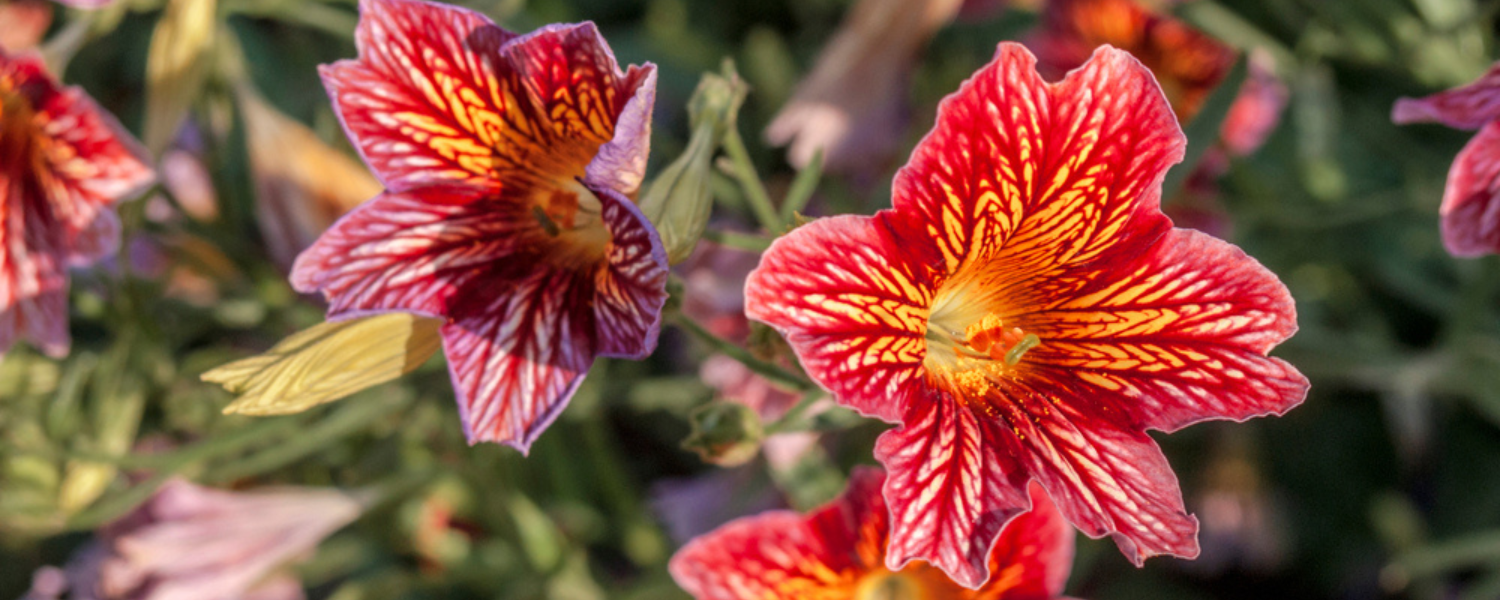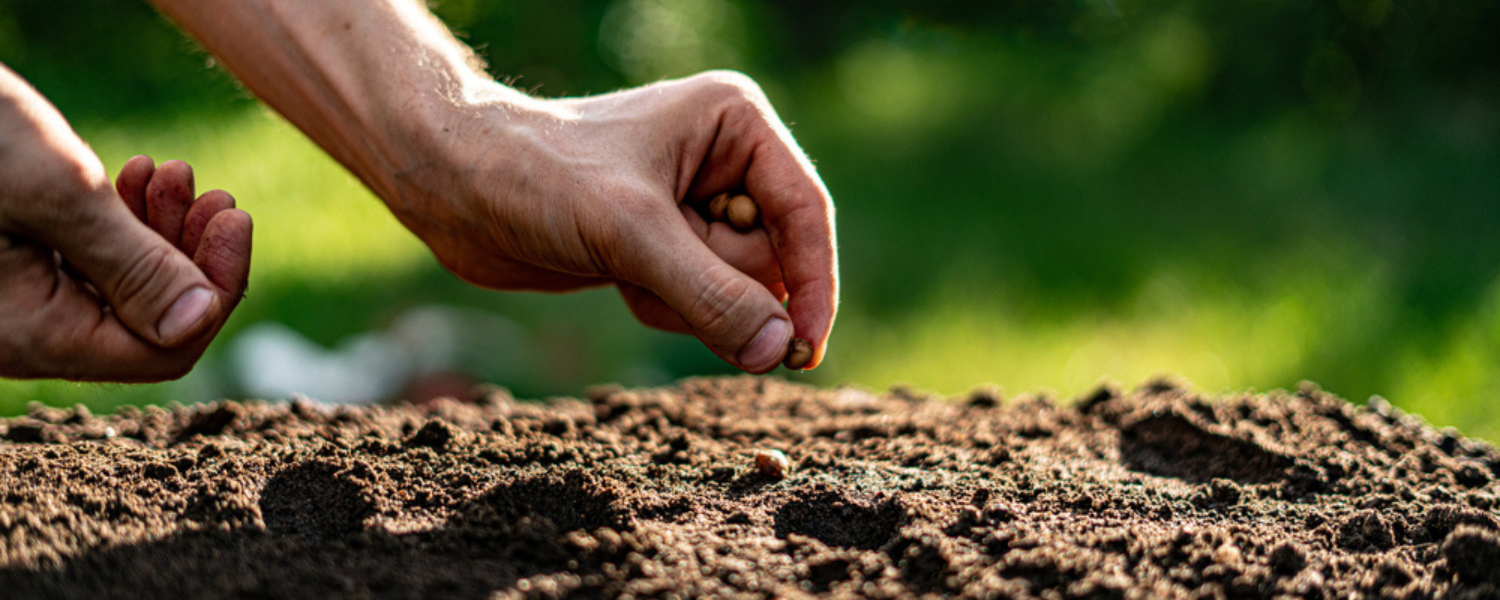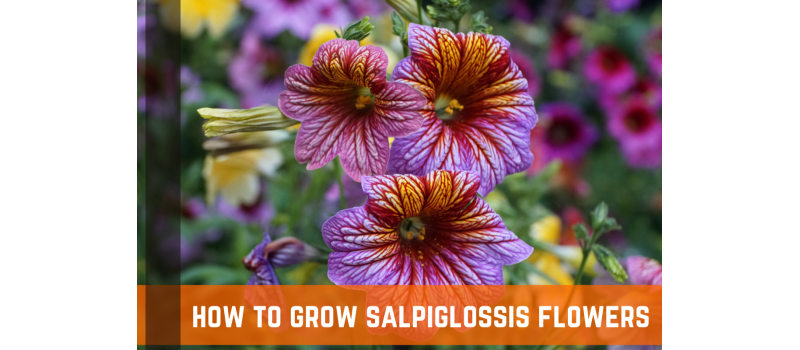Salpiglossis "Painted Tongue" plant may be the best option if you're looking for a plant with a lot of beautiful, long-lasting color. Despite its strange name, this plant is appealing due to its lovely blossoms. Salpiglossis grows with trumpet-shaped, petunia-like blooms. Red, reddish orange, and mahogany are some of the colors that painted tongue plants can occasionally display on a single plant.
Colors like purple, yellow, deep blue, and pink are less prevalent. When grown in clusters, salpiglossis blooms, which are excellent for cut flower arrangements, can seem even more stunning. This underutilized cool-weather annual makes a wonderful addition to your flower beds and pots. Read on to learn more about the Salpiglossis and how to grow and care for it!
Salpiglossis Information & Characteristics
The scientific name for this member of the nightshade family is Salpiglossis Sinuata. The painted tongue flower not only looks fantastic in the garden, but it also produces a beautiful cut flower. The five-lobed flowers have a stunning variety of color schemes and designs. They frequently have veins of a different hue or are marbled. The diameter of a salpiglossis flower is between one and two inches.
On each stem, several trumpet-shaped flowers are produced. The petunia-like blossoms, which are native to Chile and Argentina, come in a wide variety of color schemes, depending on the cultivars, including orange, violet, pink, burgundy, cream, and many others. Plants mature at a height of 12–15 inches and a width of 9–12 inches. The foliage is medium green, somewhat erect, and has wavy borders.

Growing Conditions For Salpiglossis
Light & Temperature
In regions with cool summer temperatures, Salpiglossis thrives. In hot, muggy conditions, it struggles. Provide midday shade if you live in one of the warmer growing zones, or only grow this plant as a spring annual. You can grow painted tongue flower throughout summer in full sun if you live somewhere with cooler summer temperatures.
Soil
Salpiglossis does not seem to care much about the soil. The ideal garden soil is average and regularly watered. To make sure the soil keeps moisture and has nutrients to feed the plants as they grow, you can add a few shovels worth of compost to your potting soil before planting painted tongue flowers.
Water
Salpiglossis plants will require water every few days. Once they are established, they are fairly drought tolerant, so you may reduce your watering to once per week to 10 days. If temperatures are high from early to mid-summer, make sure the plants get about an inch of water per week. If you're growing Salpiglossis in pots, water the plants every day if they get direct sunlight or every other or third day if they get afternoon shade.
Nutrition & Fertilizer
Painted tongue plants require a lot of nutrients to grow and bloom, much like other annual blooming plants do. Before planting the transplants, add an organic granular fertilizer to the beds and containers. Composting the planting area before the growth season begins ensures that no additional fertilizer is required. You can skip the fertilizer phase if you make your soil healthier overall by amending it.

How To Plant Salpiglossis Flowers From Seed
After the earth has warmed and all threat of frost has passed, plant Salpiglossis seeds directly in the ground. Because seeds need darkness to germinate, scatter the small seeds over the soil's surface and then cover the area with a breathable material that will black out most sunlight. As soon as the seeds begin to sprout, which typically takes two to three weeks, remove the material.
A different option is to start Salpiglossis seeds inside in the late winter, perhaps 10 to 12 weeks before the last frost. When seedlings are transplanted outdoors, peat containers work well and protect the roots. Until the seeds germinate, cover the pots with black plastic to provide darkness. To keep the potting mix just barely damp, water as needed. Look for this flower at most garden centers if you don't like the notion of starting seeds.
How To Transplant Salpiglossis Flowers
Salpiglossis should be handled similarly to transplants of any other annual flowering plant. When the time is appropriate, remove them from their seedling pot and place them in a bigger pot or in the ground. Before transplanting the roots, loosen them with your fingers.
Plants should be spaced roughly 10 to 12 inches apart. Following the Salpiglossis care advice mentioned later in this article, water them well once they have been relocated.
Salpiglossis Care & Maintenance
Make sure your plants get adequate sun to encourage bushiness and compact development. Trim or pinch back taller plants to promote denser growth if the plants grow lanky. Use a pair of pruners or flower snips to cut the plants' height in half in the first few weeks of June. By encouraging the growth of side shoots and branches, this results in a bigger, bushier plant with more blooms.

Common Salpiglossis Pests & Diseases
Although Salpiglossis is not frequently troubled by pests or other concerns, a few problems could arise. Insecticidal soap, as well as fostering ladybugs, parasitic wasps, and other natural predators, can be used to control aphids. When it come to root rot, by making sure the planting site is well-drained and dry, root rots can be avoided. Botrytis is a fungus that affects plants and can cause leaves and entire stems to fall off. It also causes fuzzy mold to grow on the plants. Make sure the plants have enough air circulation and remove any dead or ill foliage as soon as you can to stop it.
Conclusion
Salpiglossis are annual plants that are native to Chile and are also referred to as painted bells or tube flowers. The Salpiglossis plant has long stems covered in bell-shaped flowers and leaves that are big and heart-shaped. There are many different shades of the Salpiglossis flower, including red, orange, yellow, pink, and purple.
Salpiglossis should be grown in warm climates because they do not tolerate cold weather very well. They will tolerate some shade but prefer fully exposed areas with well-drained soil. Salpiglossis plants require little maintenance and little attention. To promote ongoing blooming, it's crucial to deadhead the flowers. Salpiglossis plants offer color and charm to any garden and make great cut flowers.

